Garnishing with Oranges

Oranges aren’t just delicious - they’re one of the most versatile fruits you can use in the kitchen. Beyond their bright, juicy flavour, they offer endless possibilities for presentation.
With a few simple knife skills, you can transform an everyday orange into elegant garnishes that bring colour, freshness, and style to both sweet and savoury dishes. From neatly cut segments that add a burst of citrus to salads or desserts, to fragrant zest that lifts flavour in dressings and sauces, or an eye-catching decorative double twist that finishes off a platter, learning how to cut oranges beautifully is an easy way to make your plates look more professional.
This guide will show you how to make these garnishes and how to use them to enhance your food presentation.
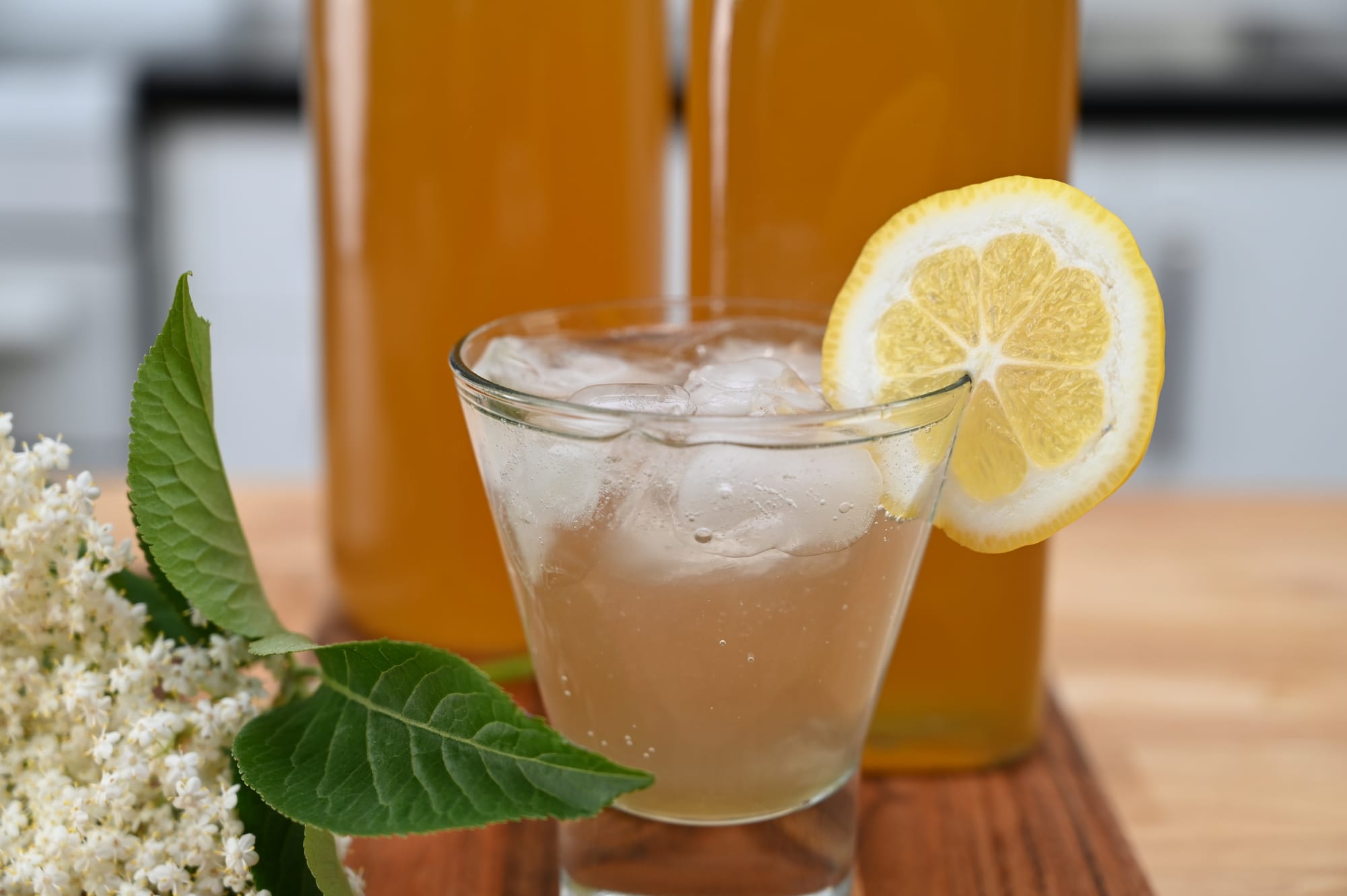

Garnishing with citrus.
Article Contents
- Useful Equipment
- Zesting an Orange
- Making an Orange Twist Garnish
- Segmenting an Orange
- Using Orange Garnishes
Useful Equipment
- Citrus Zester
- Microplane
- Small serrated paring knife
Zesting an Orange
The zest of an orange or any citrus fruit is packed with intense flavour, and so often we just throw it away!
A zester is a simple tool that quickly and effortlessly peels off the thin outer layer of the peel, leaving behind the bitter white pith. If you don't have a zester you could also use a microplane - this will give you a finely grated zest as apposed to the thin curls you get with a zester.
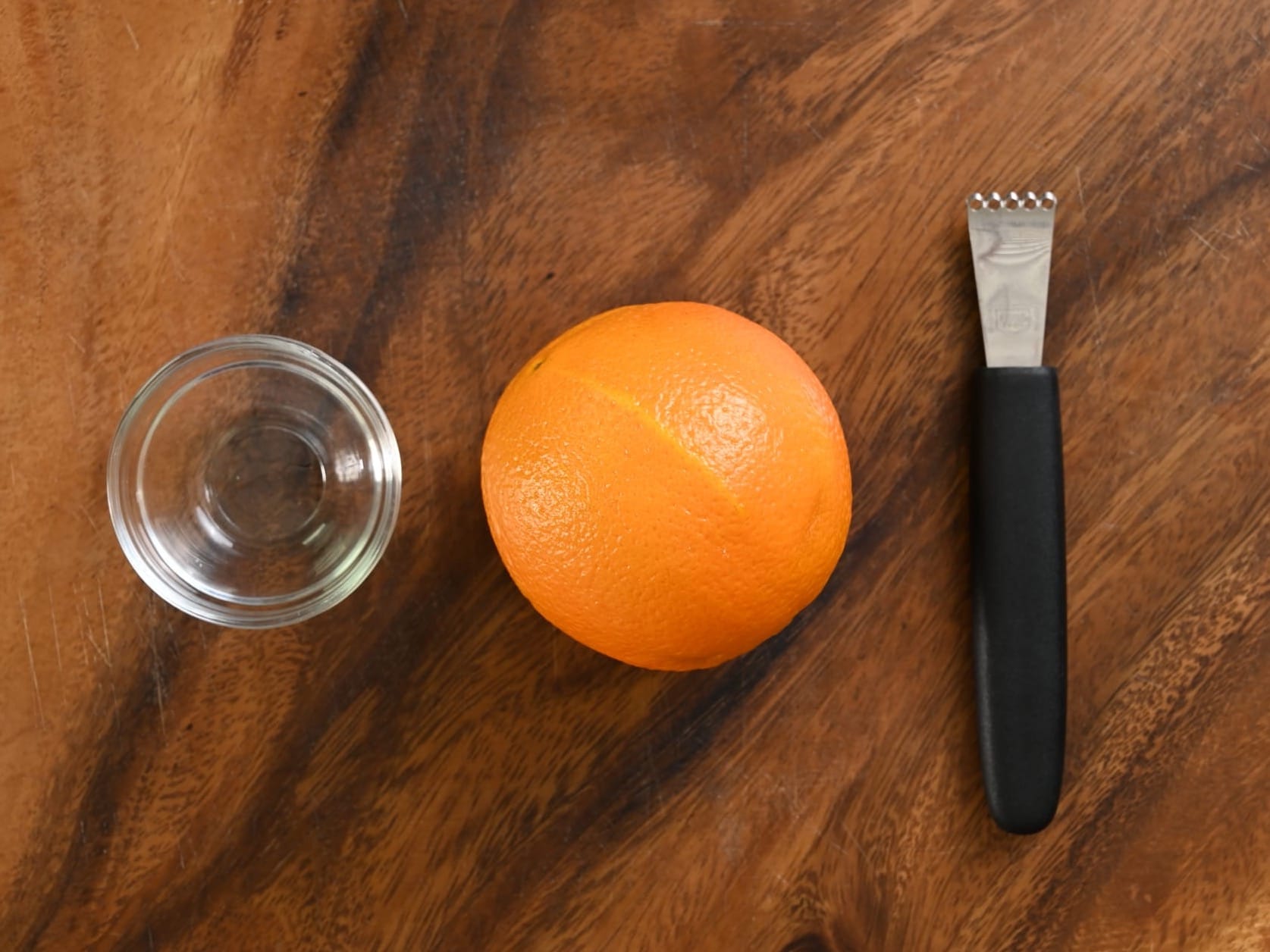
- Gently pull the zester down the orange from the top to the bottom. The peel will come off in beautiful thin strips ready to use in salads, dressings, or for garnishing etc
If you press too hard while zesting, you’ll scrape off the bitter white pith instead of the sweet, flavourful peel.

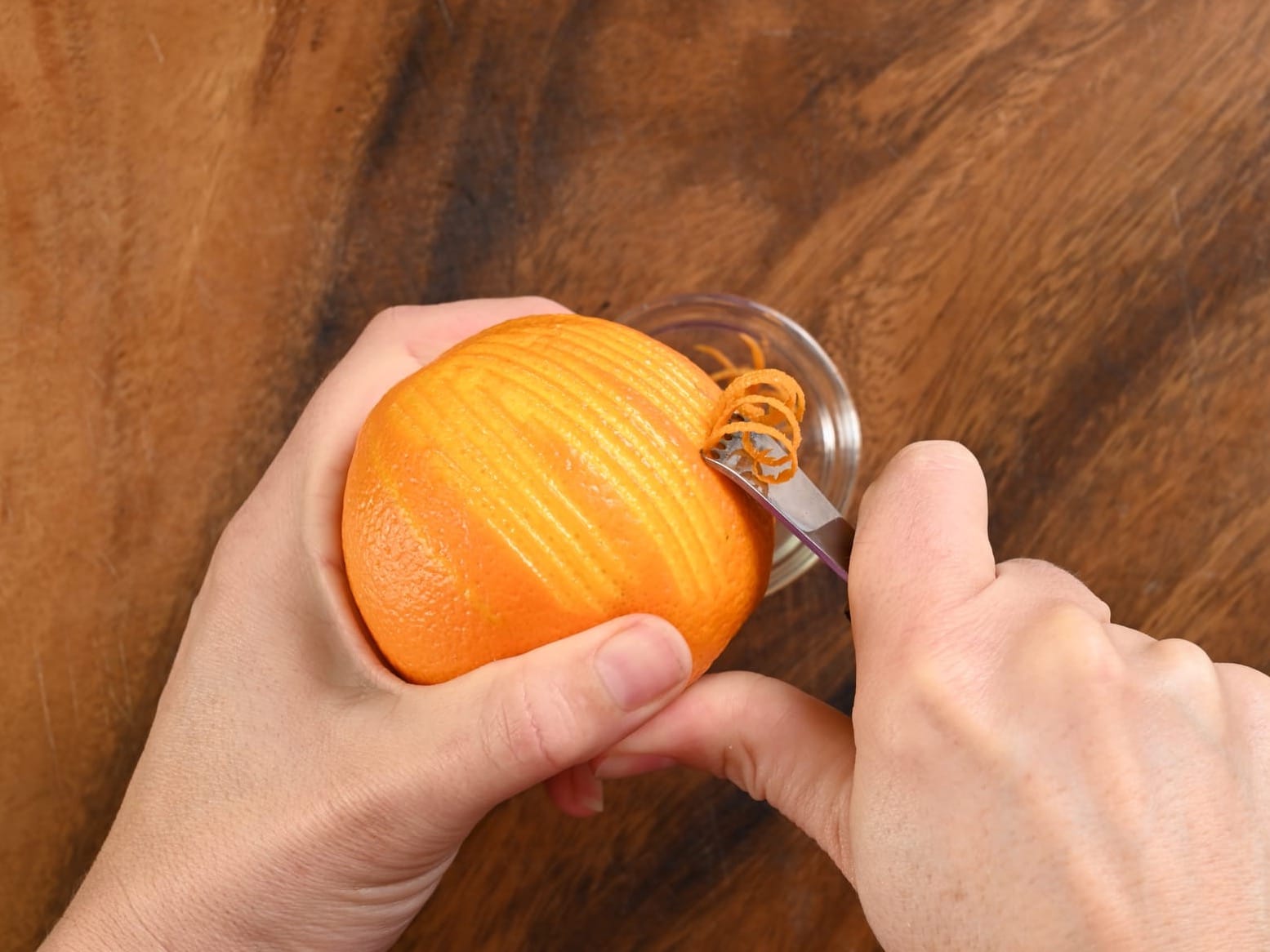

Zesting an orange.
If you don't have an immediate use for the zest, wrap it in plastic wrap and freeze. It will still be perfect for adding to desserts, into smoothies, sauces and dressing.
Making an Orange Twist
A slice of orange over the side of a glass can add to the presentation of a cocktail or summery drink, but what if you could make a double twist? It's so easy, yet it looks fantastic on a fruit platter or dessert platter and gives it a little bit of extra 'wow' factor.
- Cut a thin slice off the stem end of the orange and discard.
- Start slicing another thin slice, but only cut halfway through.
- Then cut another slice the same thickness, and cut all the way through.
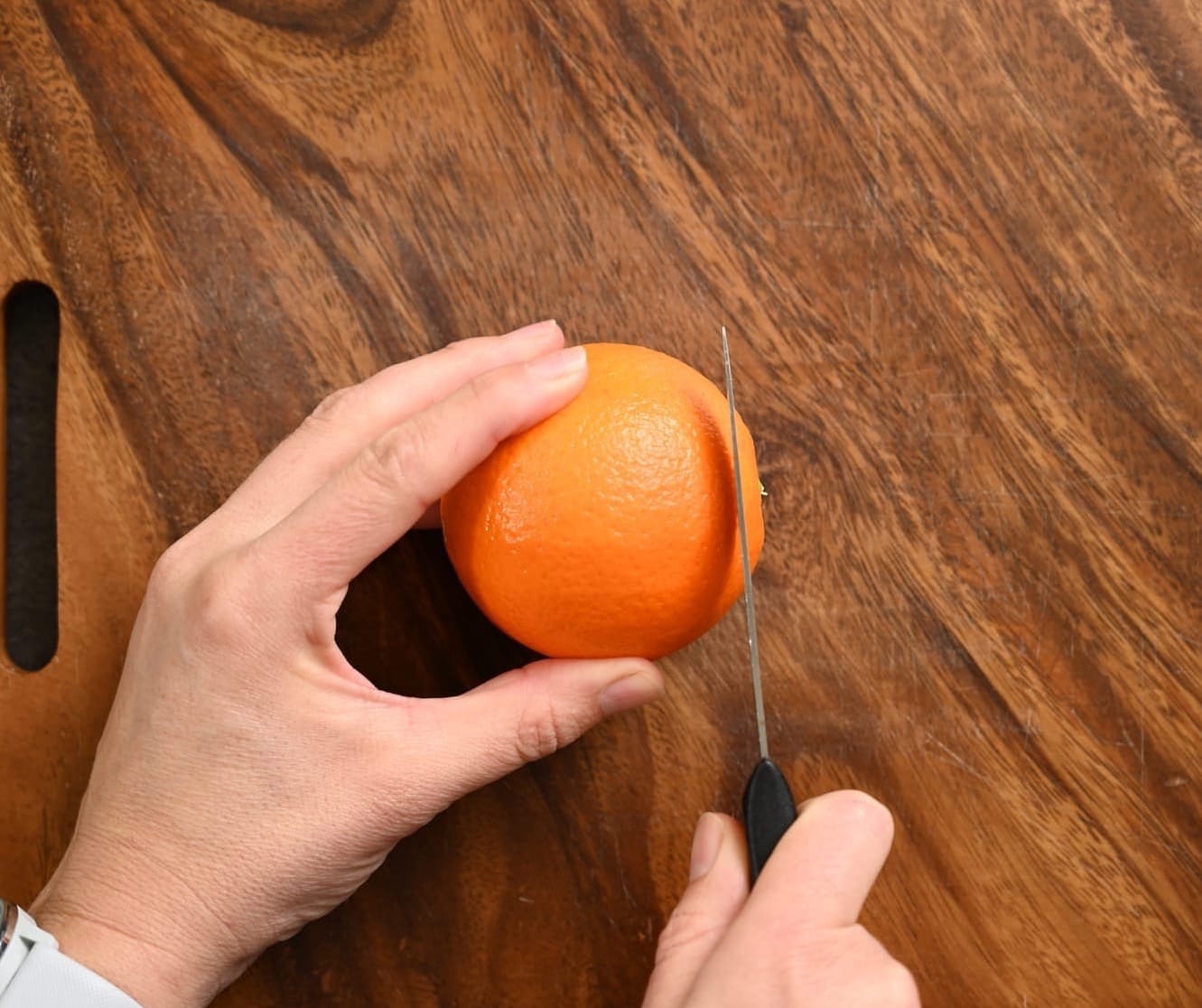
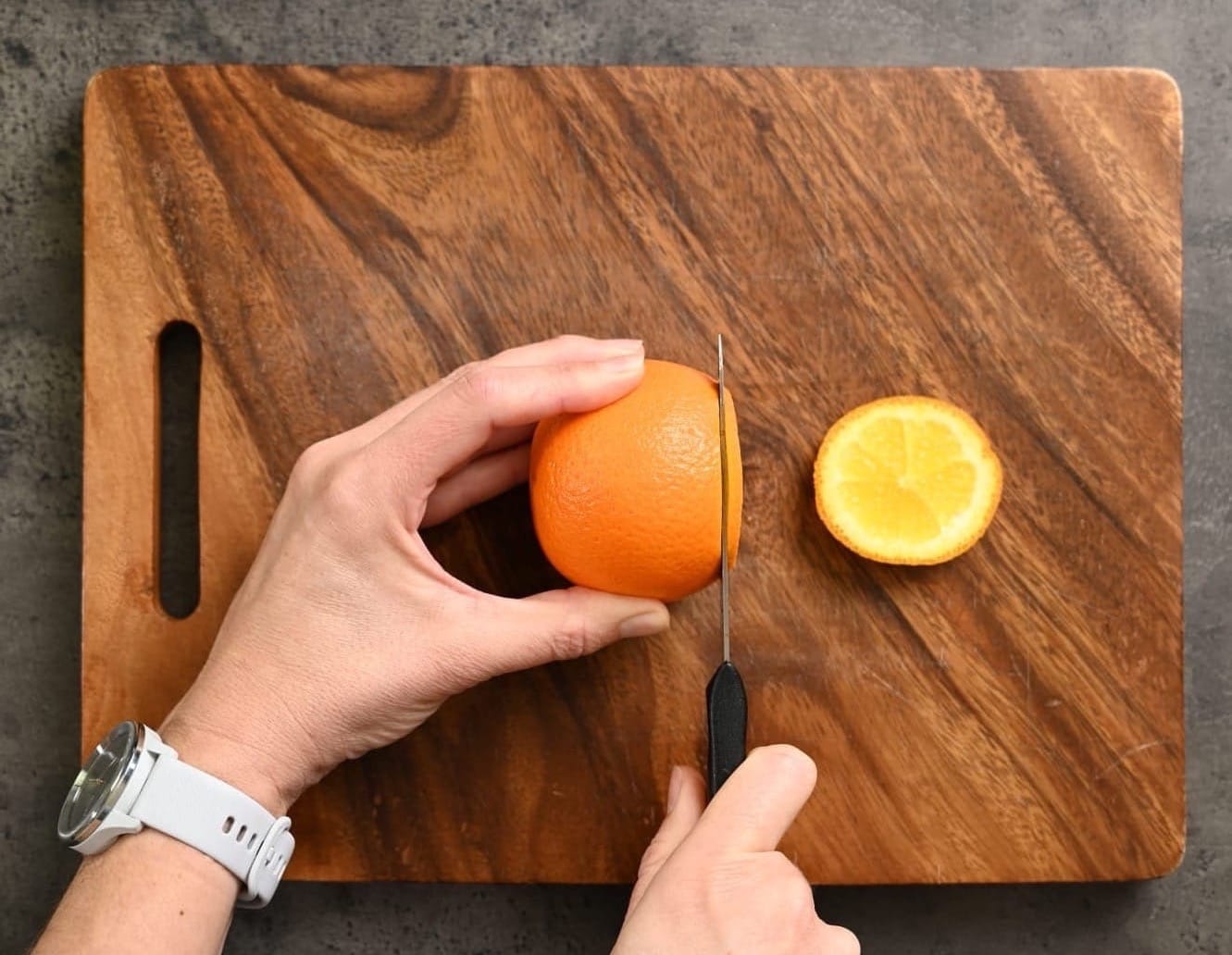

Cutting an orange to make a double twist garnish.
This is what your slice should look like.

- Lay the slice on the chopping board with the split edge at the top. Make a little slit half way through the bottom solid side.


Cutting a small slit so we can twist the orange slice.
- Twist the one side of the orange slice underneath and see your double twist appear. Use to garnish a fruit platter, meat board or dessert etc.

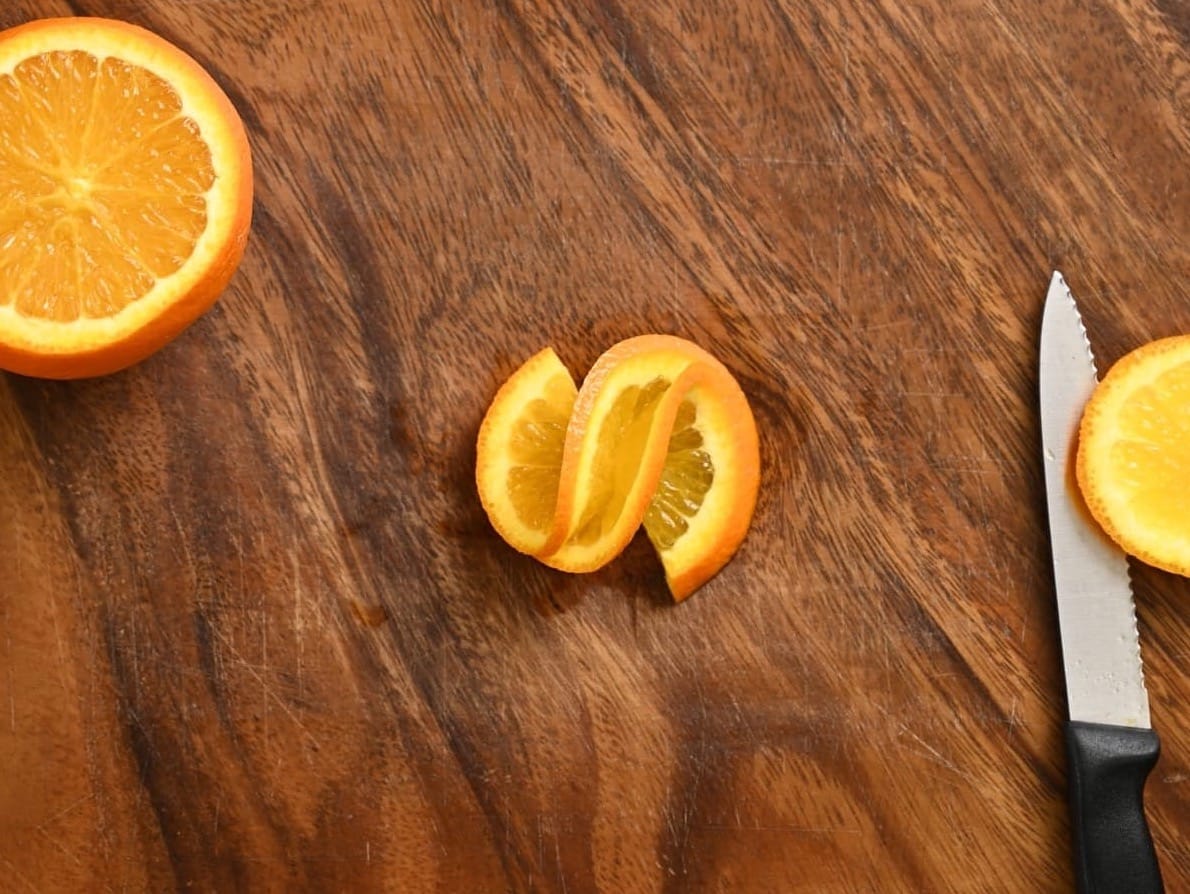

Finishing a double twist citrus garnish.
Segmenting an Orange
We often cut oranges into quarters or eighths when we think of ‘orange segments.’ Sometimes we leave the peel on; other times we remove it but still end up with the segment inside the membrane. That’s perfectly fine, but if you want your orange segments to look their best - and be the nicest to eat - this technique is incredibly valuable.
Peel the Orange
- Cut off the top and bottom of the orange.
- Sit the orange on one of the flat sides.
- Using a small serrated paring knife, start at the top and angle the knife to cut off the peel. Follow the contour of the orange to remove a thin slice of peel.
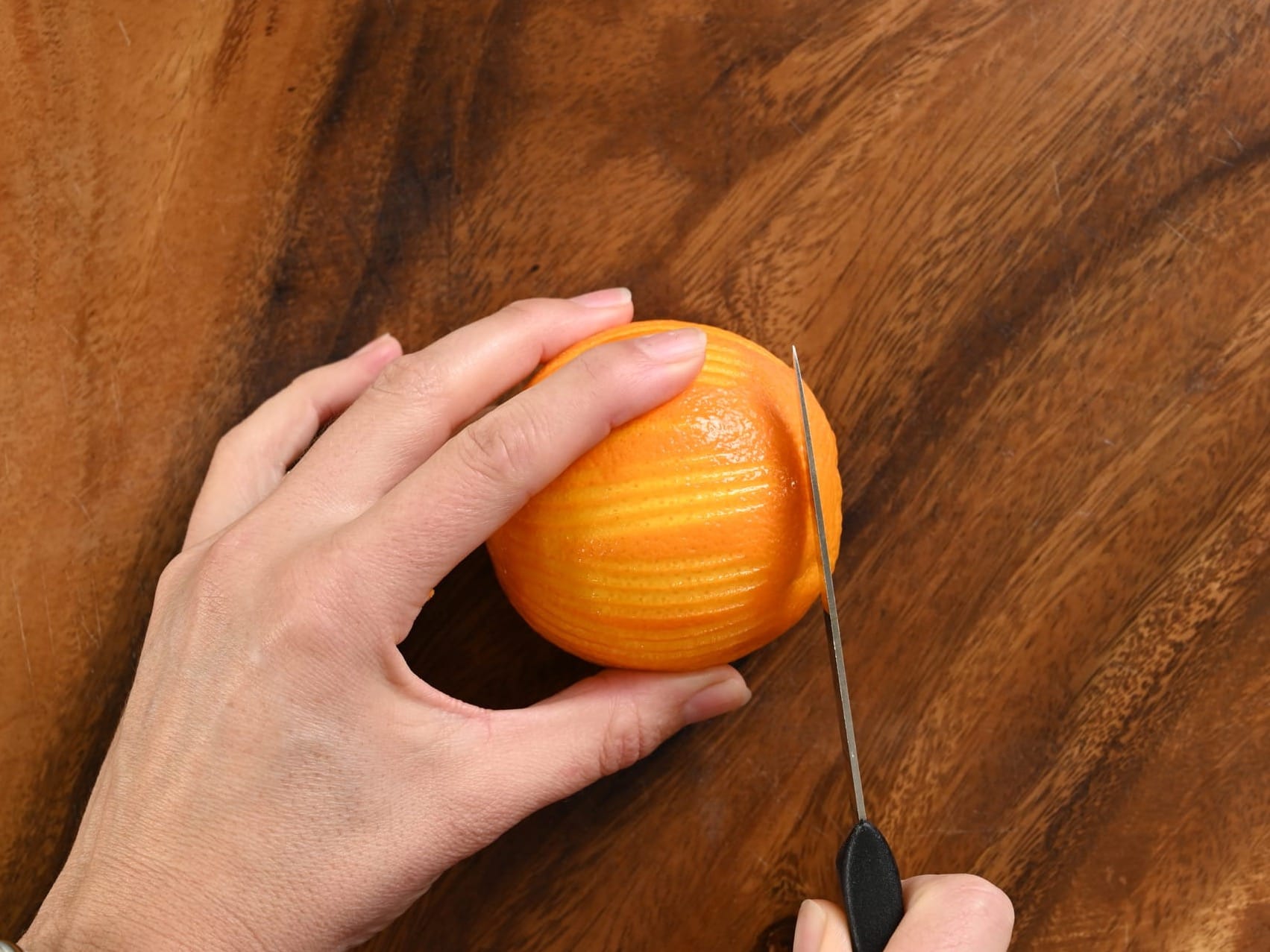

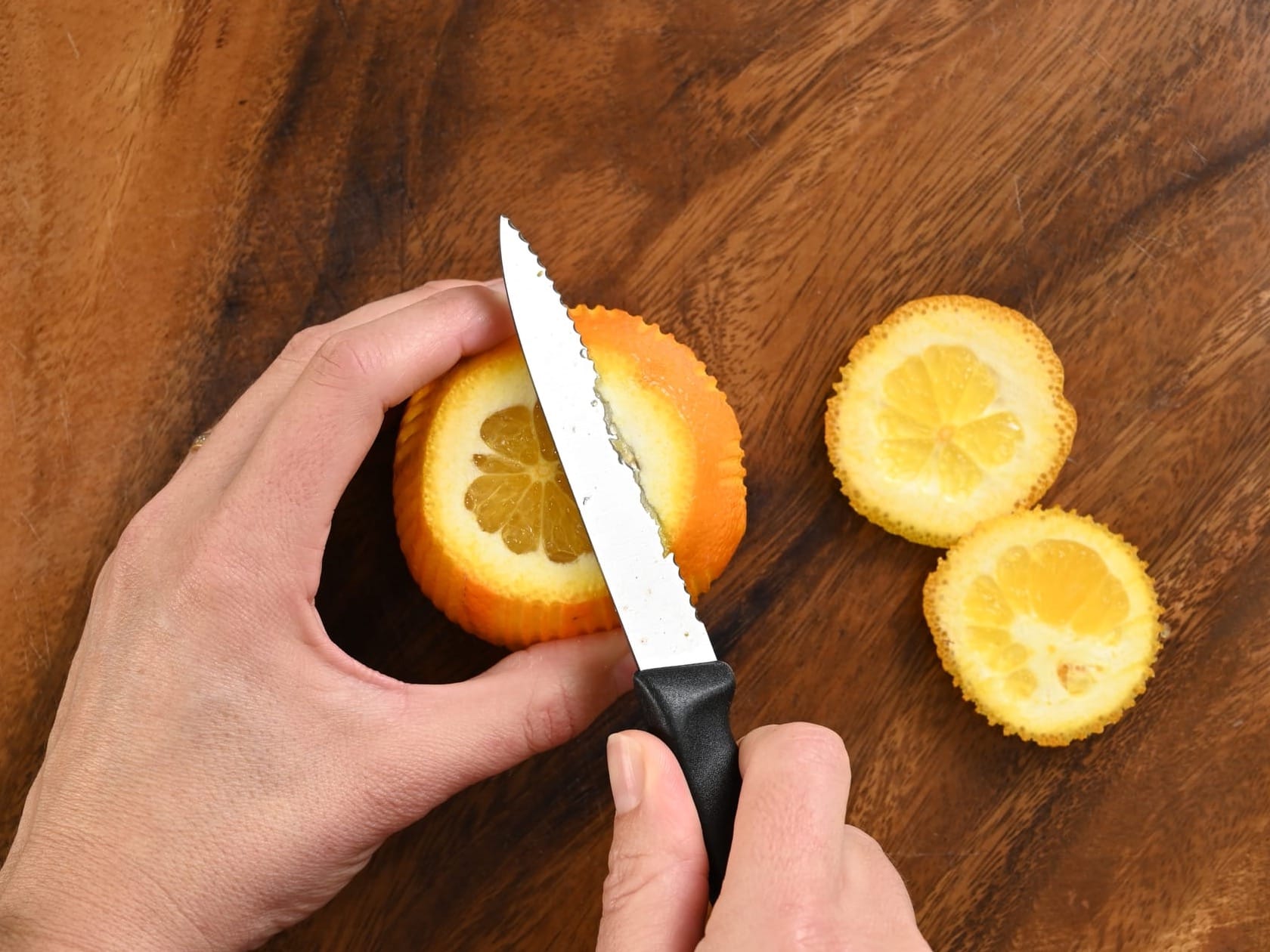
Peeling an orange.
- Follow the natural contour of the fruit, taking off thin slices by starting each cut just behind the white pith and working from top to bottom.
- Starting each slice just behind the pith will leave you with an orange that’s fully peeled and completely free of pith.
It will take practise to perfect this technique without losing too much of the orange flesh. If you miss a bit of pith, you can simply go back and slice off another thin sliver.
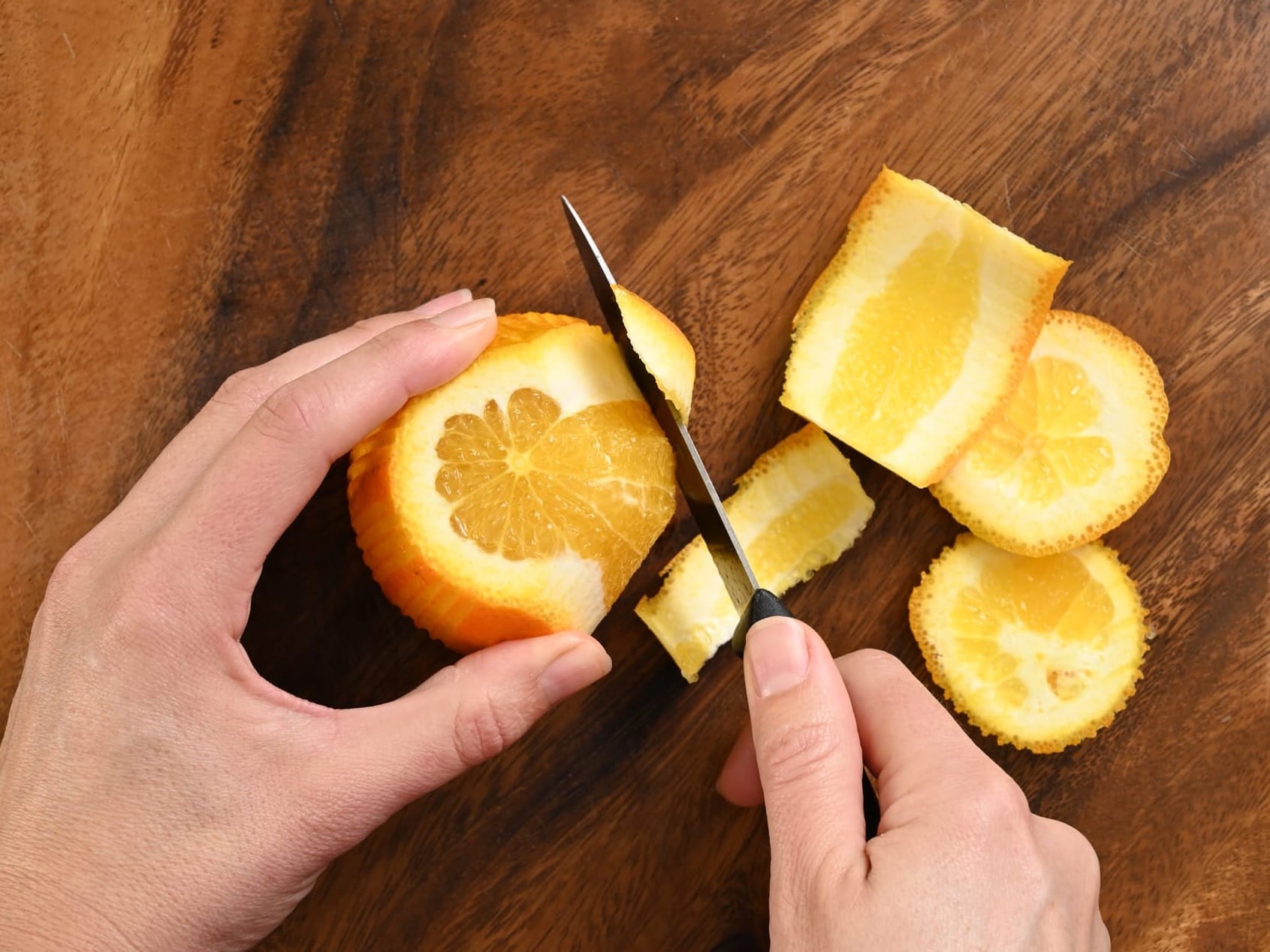
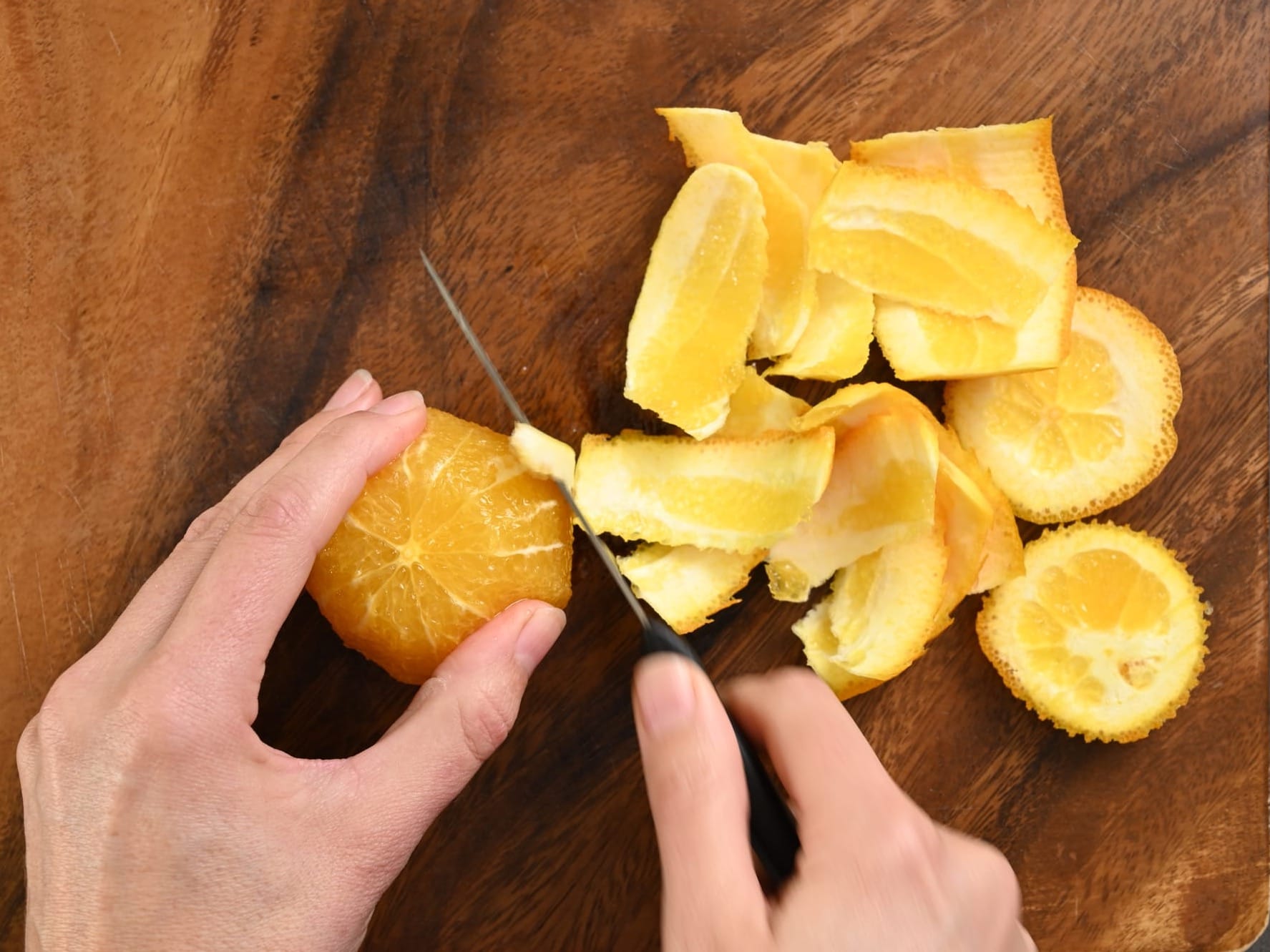
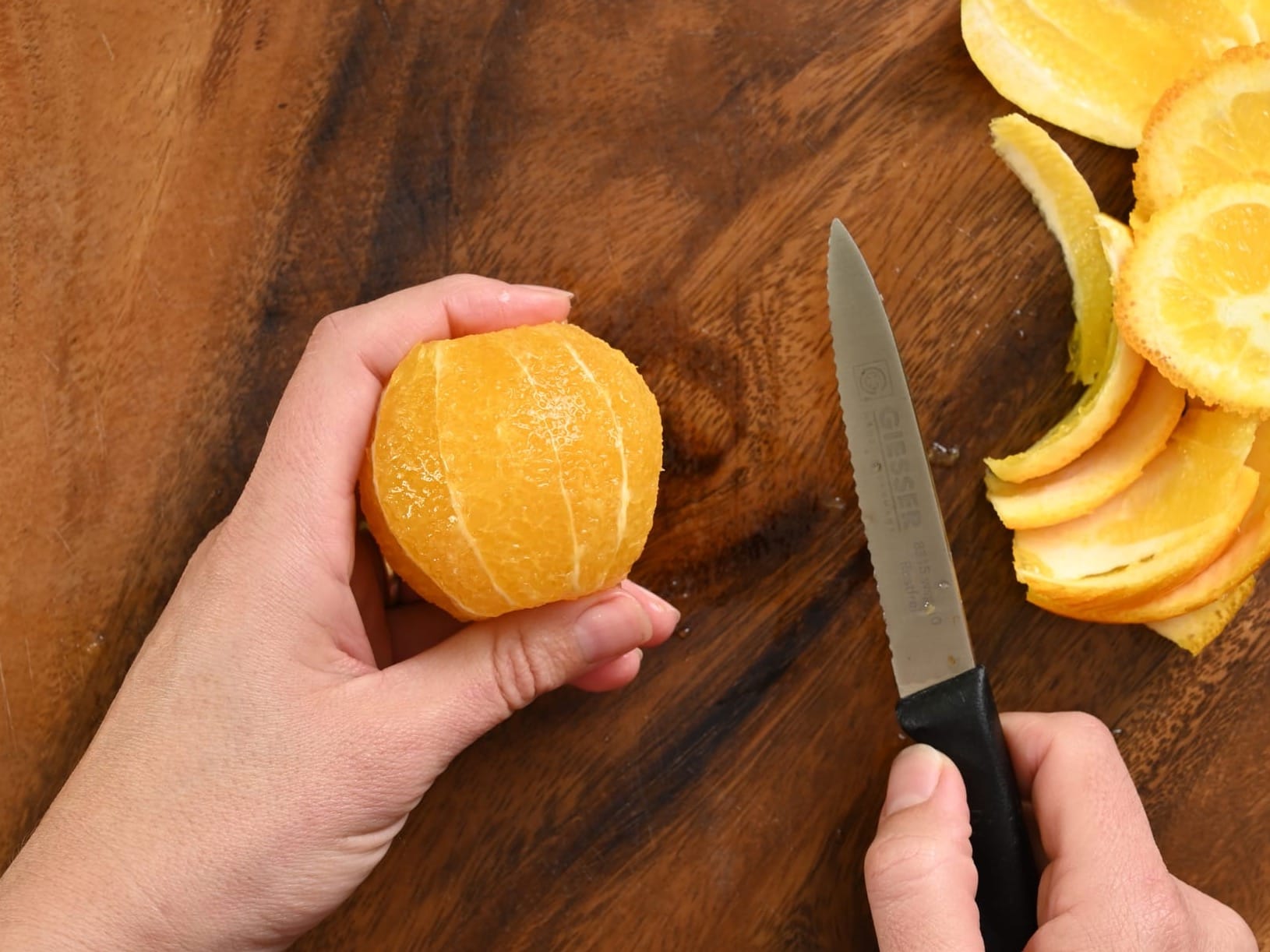
Peeling an orange.
Cut Segments
- Cut into the orange segment right next to the membrane line.
- Cut in from the other side until the 2 cuts meet. The segment will come away without the membrane, which often looks unappealing and messy.
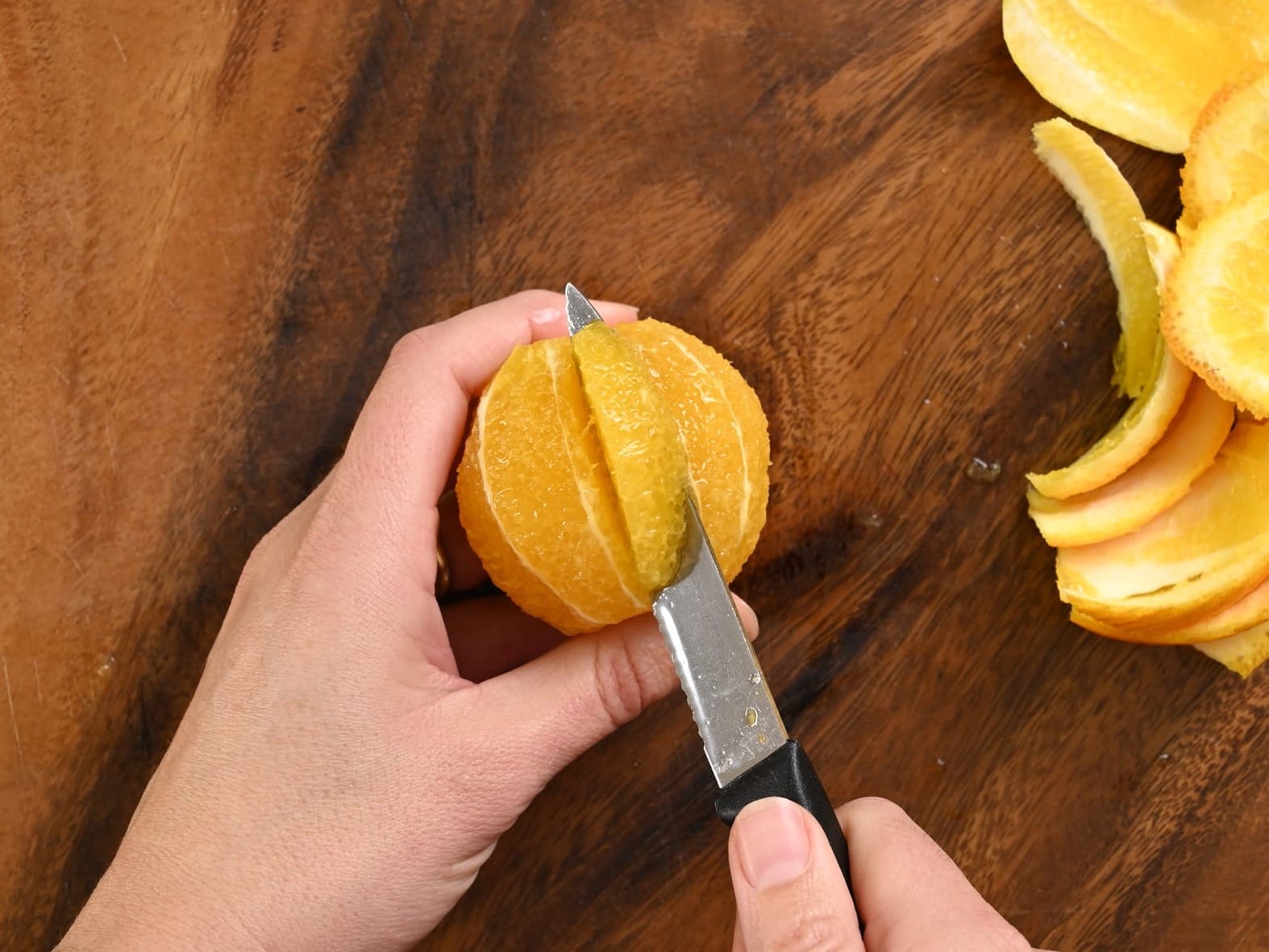


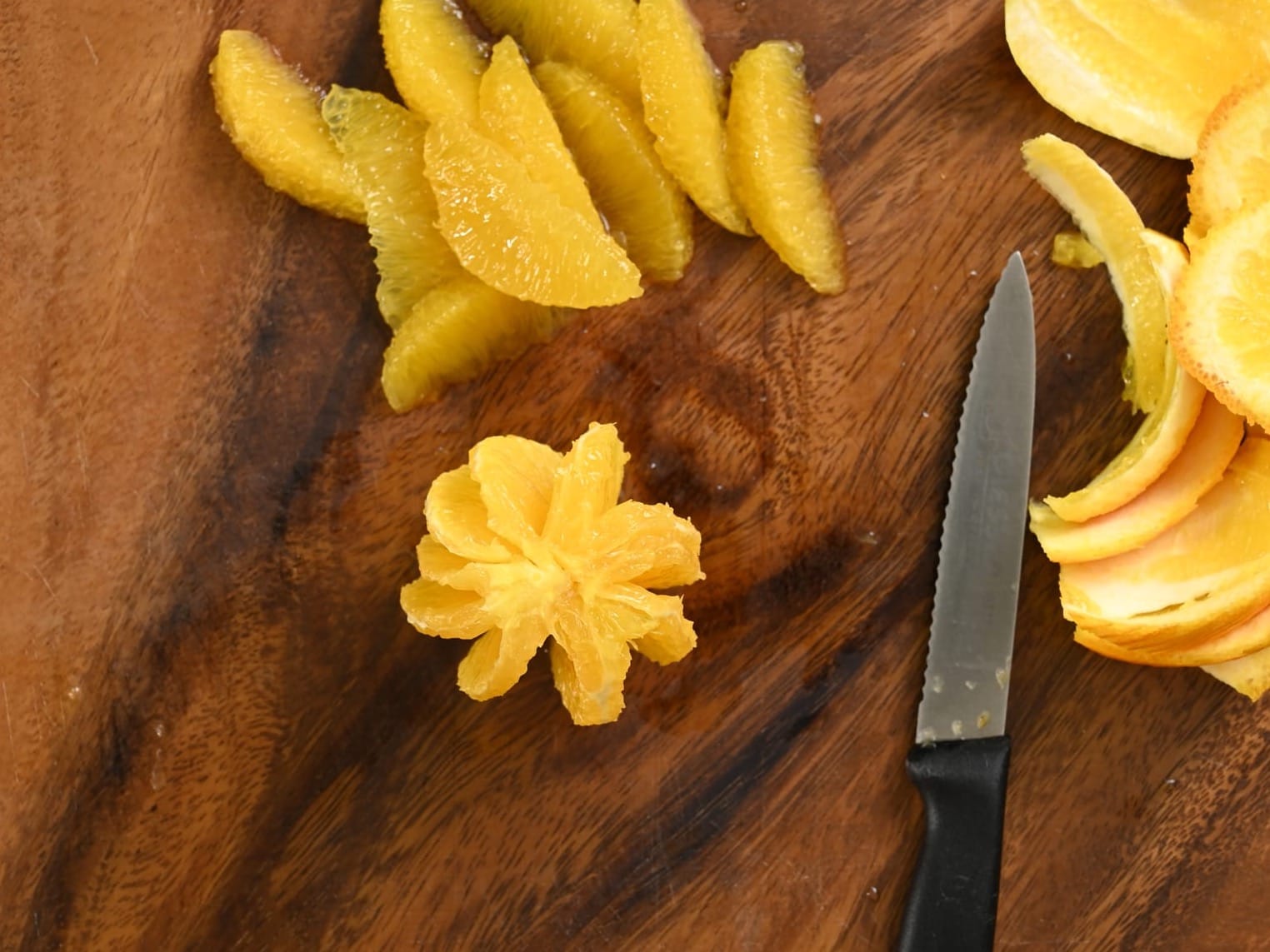
Segmenting an orange.
You can use the left over piece to make juice, or cut it into smaller chunks and use in smoothies. You can also freeze it if you don't have an immediate use for it.
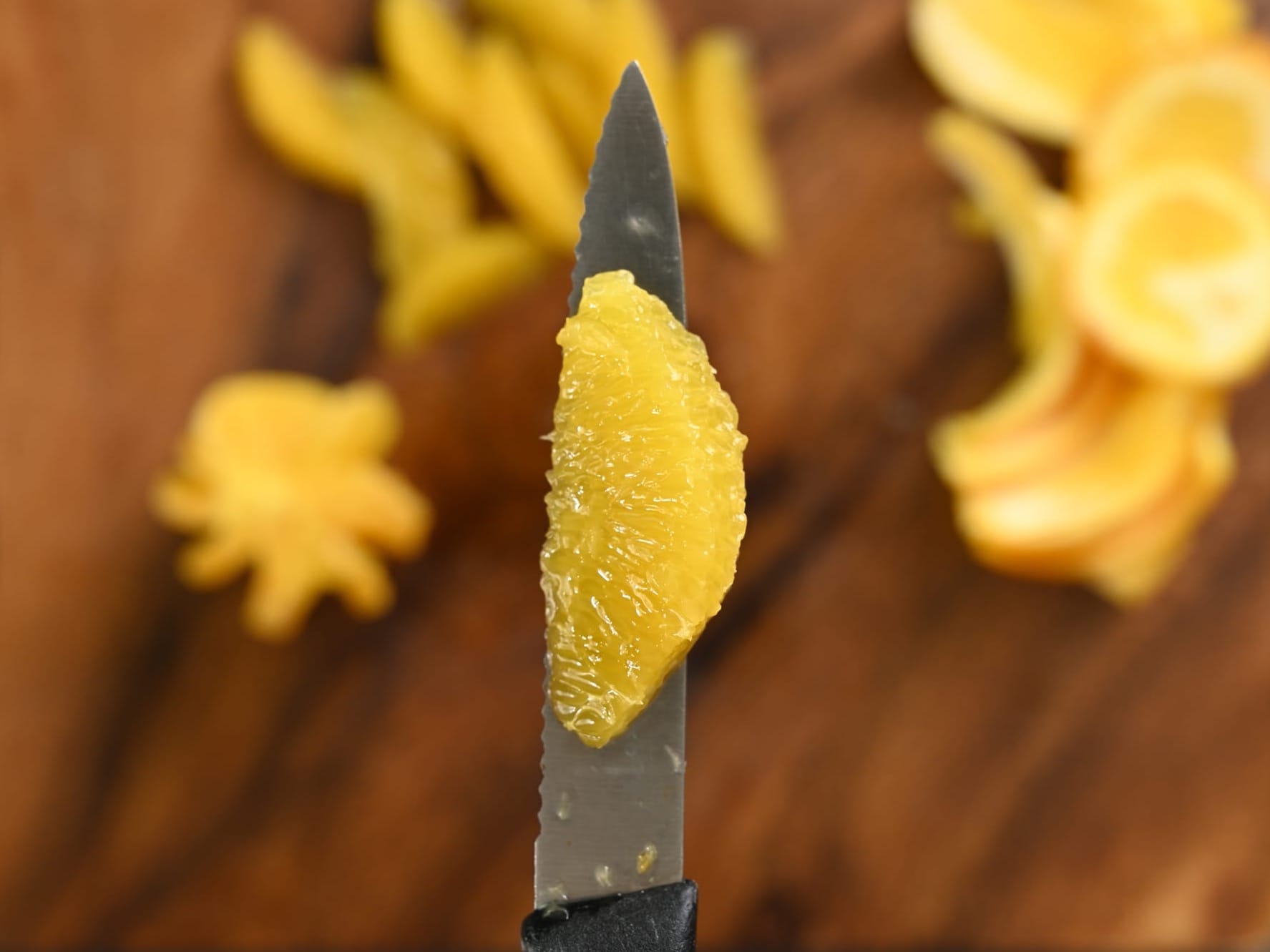
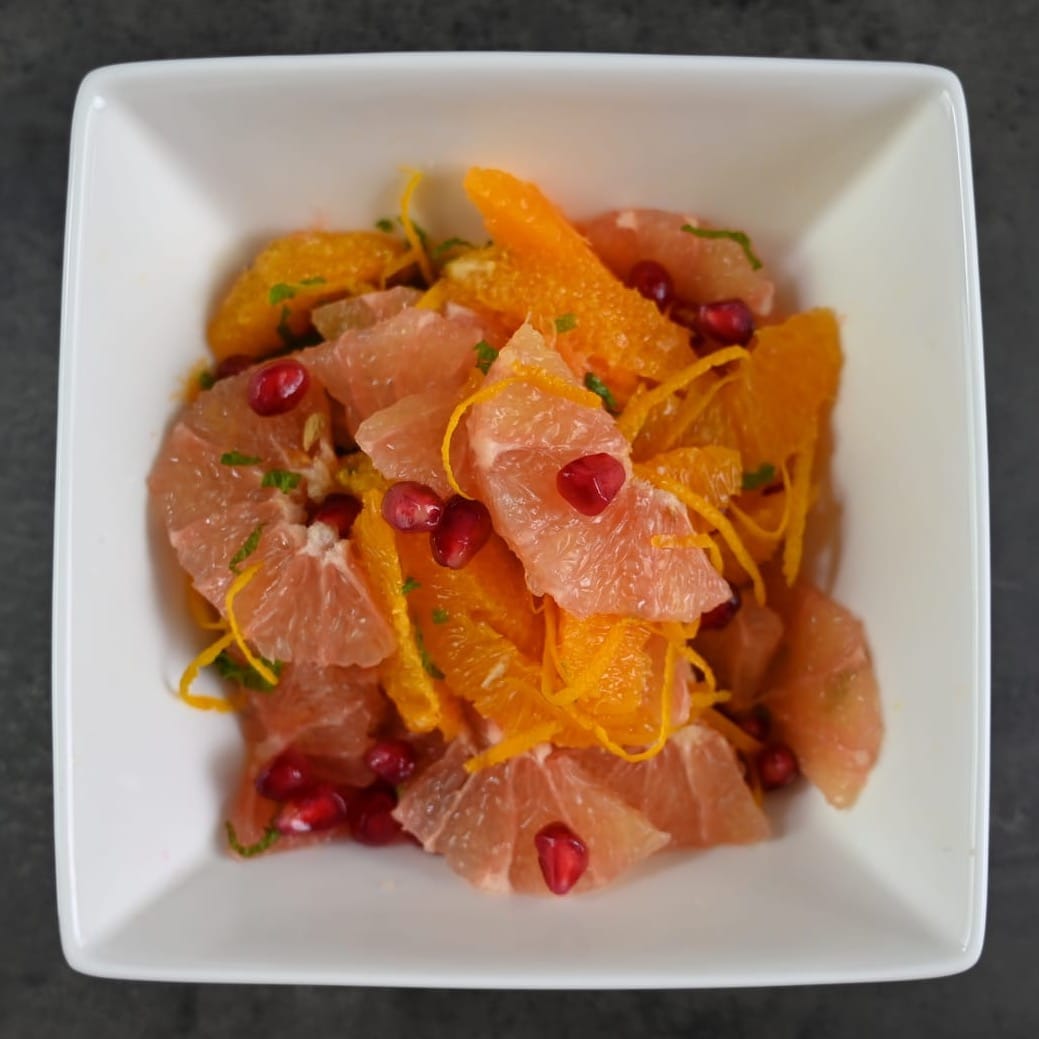
Citrus segments and used in a salad.
Using Orange Garnishes
Mastering a few simple orange garnishes is an easy way to elevate your food presentation from ordinary to exceptional. Whether you’re brightening a salad, finishing a dessert, or adding a fresh touch to a savoury dish, these techniques highlight both flavour and artistry - proof that a small detail can make a big difference.
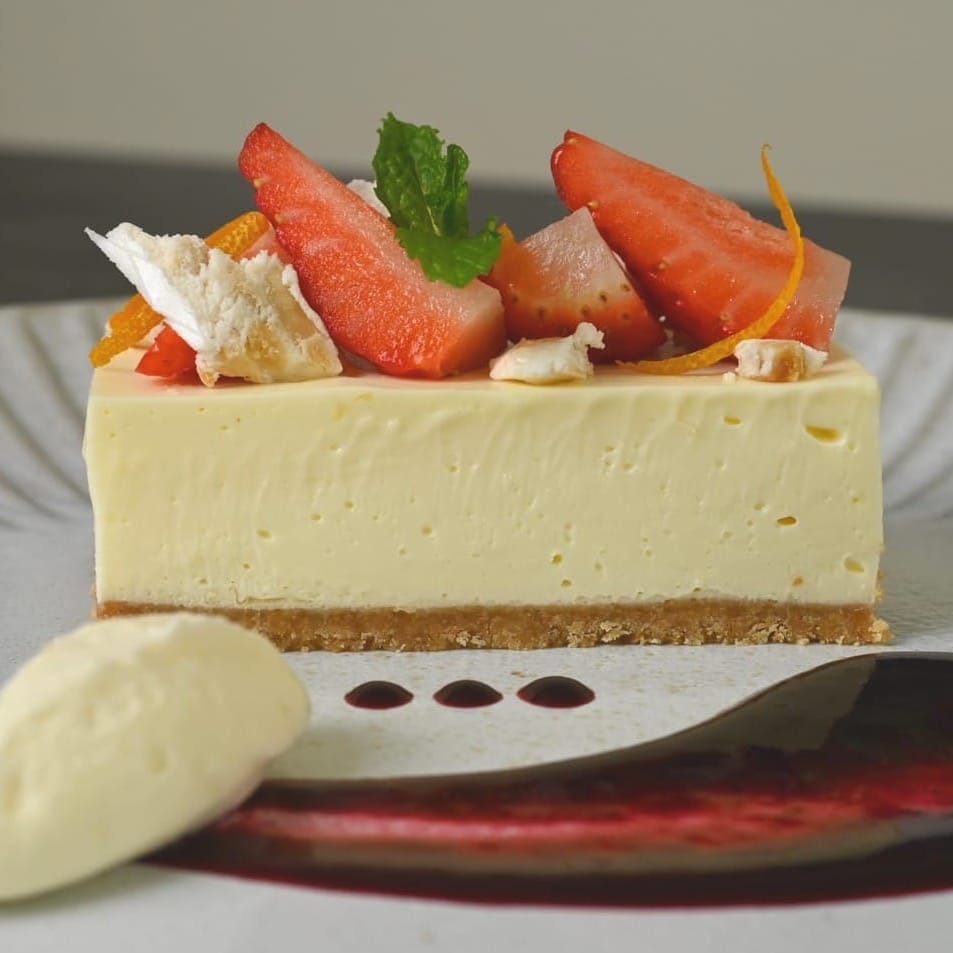
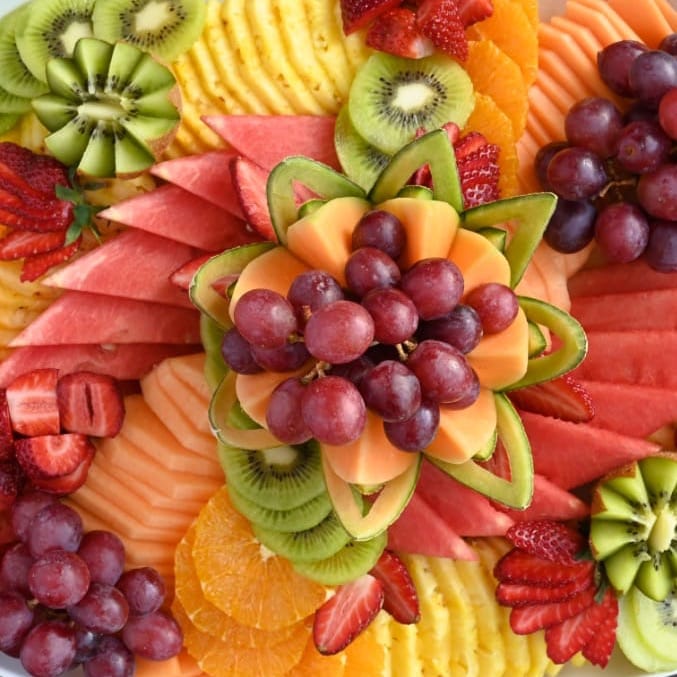

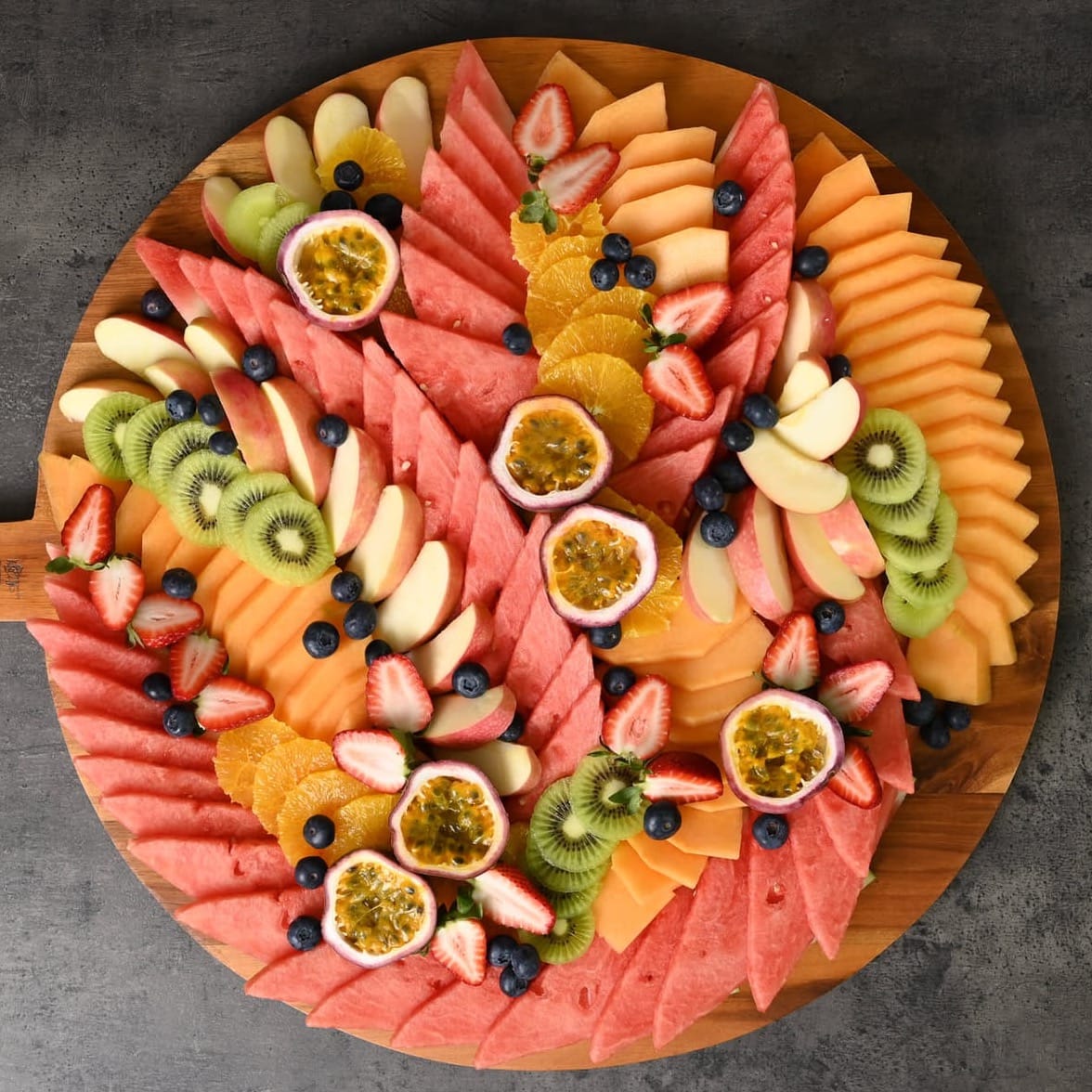

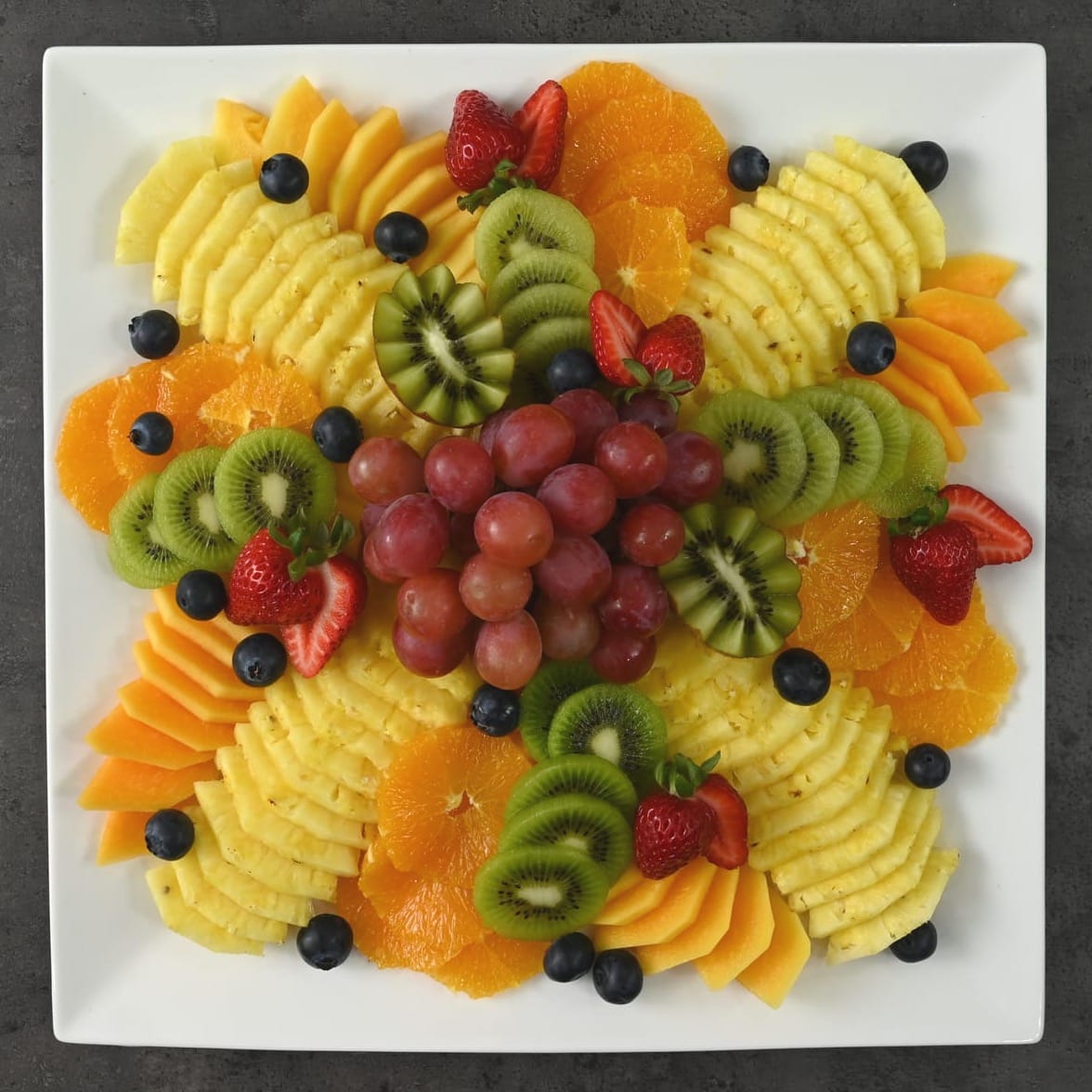
Fresh oranges used as garnishes.

